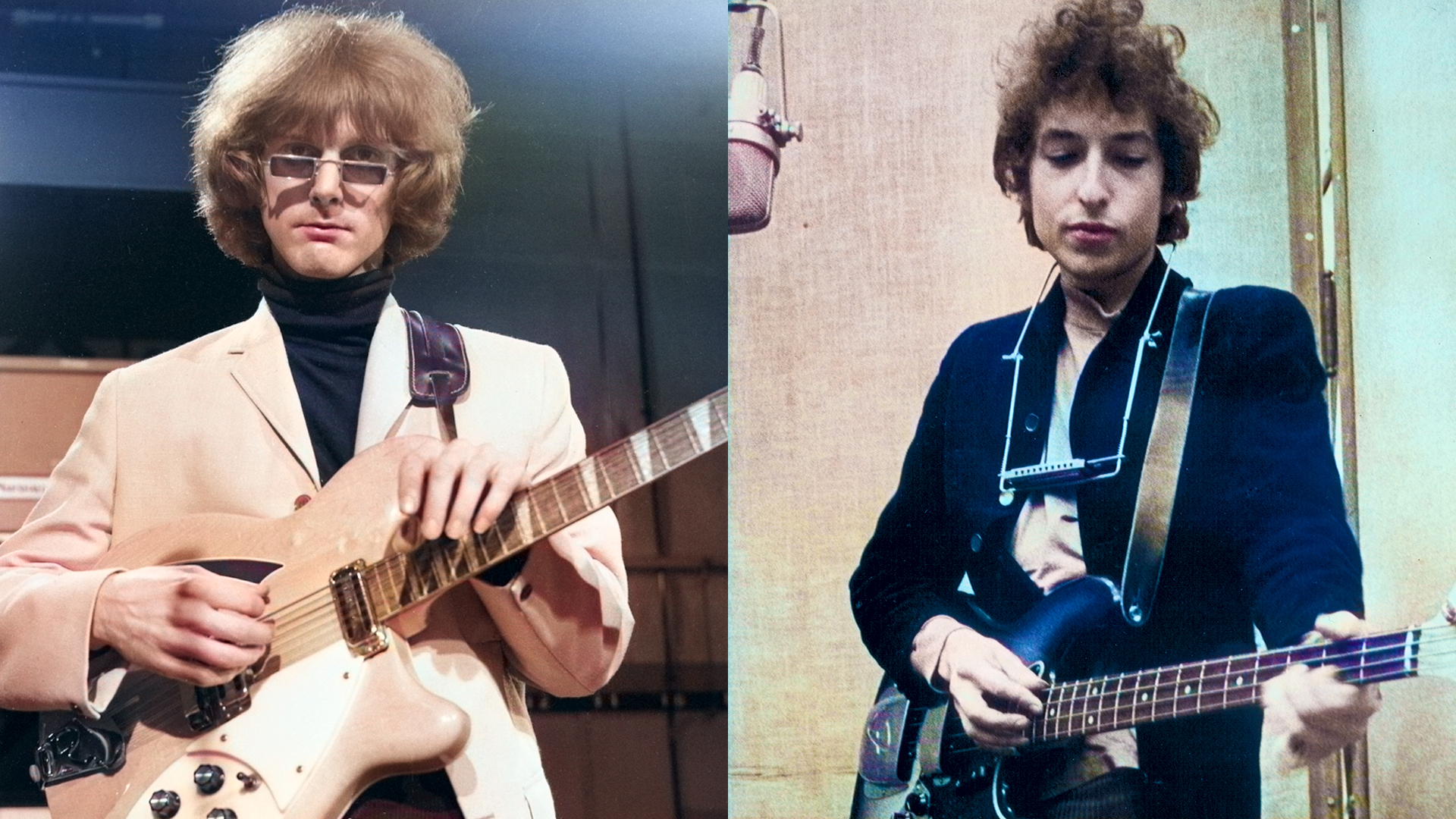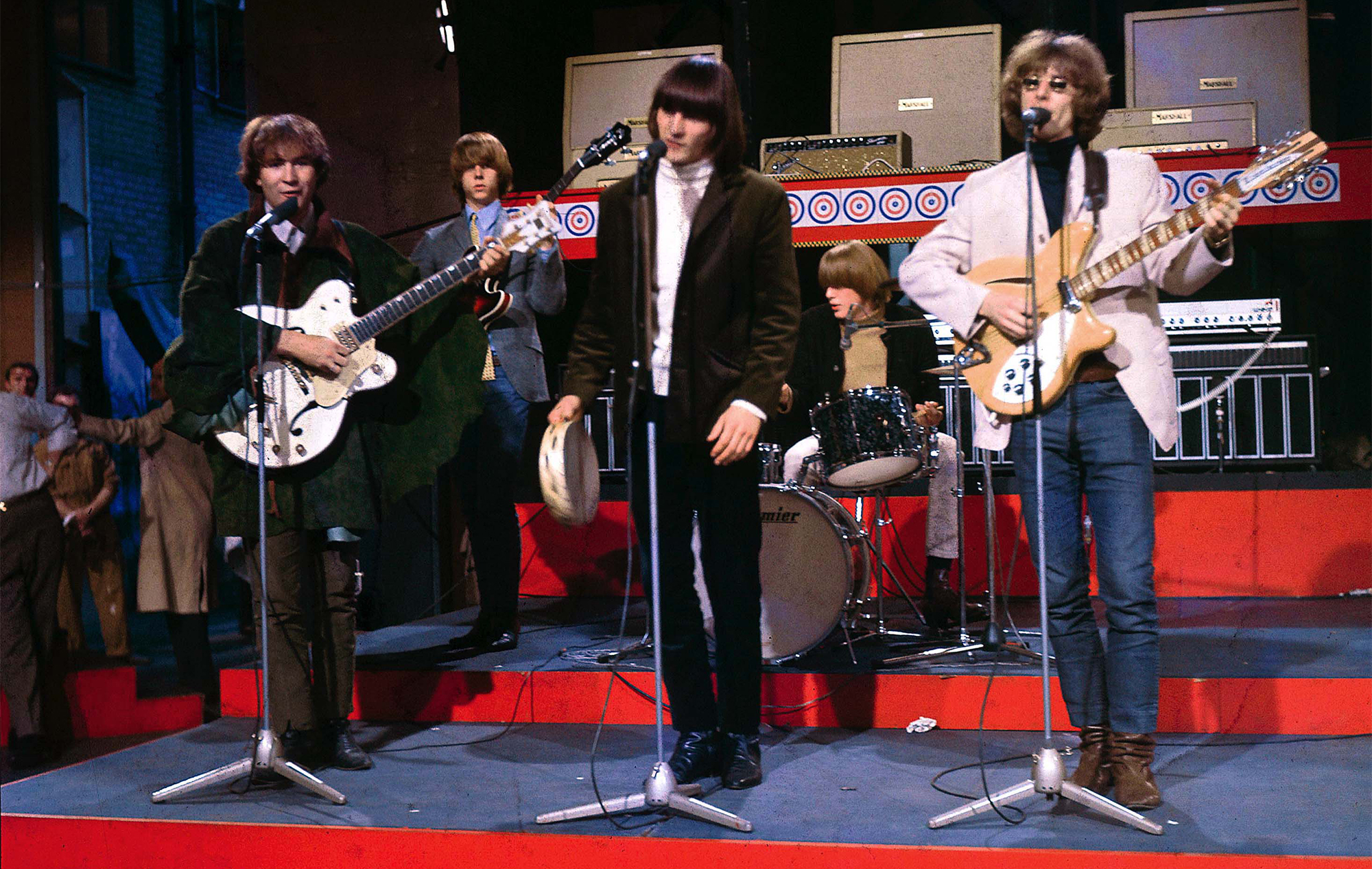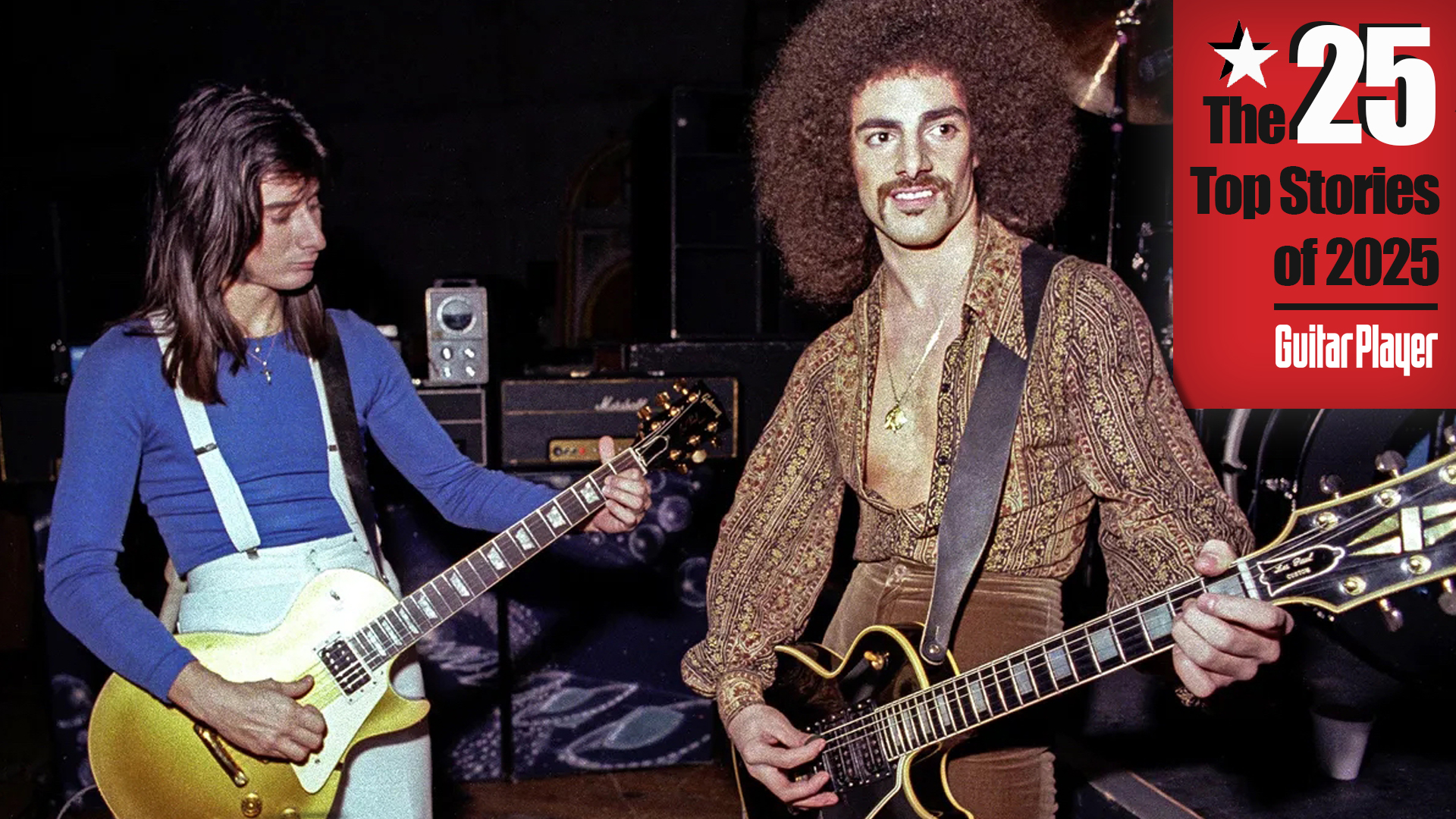“Bob said, ‘What’s that?’ I told him, ‘That’s one of your songs, man.’” Roger McGuinn says Bob Dylan didn't recognize his own song when the Byrds performed it for him
The Byrds' founder talked to us about the origins of folk-rock, the allure of 12-string Rickenbackers and his eternal love of folk music

Although he took influence from George Harrison, as a session player Roger McGuinn had been experimenting with 12-string guitar sounds long before he was captivated by the Beatles and Harrison’s use of the Rickenbacker 360/12.
“I always loved the sound of a 12-string because it sounds like a harpsichord,” he tells Guitar Player. “It's got so many nice overtones in it.”
After catching the Beatles' 1964 movie, A Hard Day’s Night, where Harrison brandished a 12-string Rickenbacker, McGuinn followed suit and picked up his own Rickenbacker, a 370/12. It was with this guitar that McGuinn went on to not only impact the guitar scene via his chiming clean tones but also launch folk-rock as a genre.
The proverbial musical patriarch of the folk-rock era was “Mr. Tambourine Man,” a song penned by Bob Dylan in 1965, which the Byrds covered and scored a hit with. At the time, McGuinn had no expectations, but when he looks back, he admits the track's importance.
“I'm happy with what we did,” he says. “I think it was innovative. I was trying to tune it for the AM radio audience, and it worked! I look back on it as a happy experience, really.”
As the ’60s progressed, McGuinn and the Byrds would influence the Beatles as well as Harrison, by turning him on to the sitar playing of Ravi Shankar. The Byrds eventually ventured into country, psychedelic rock and the merging of the two. His 12-string was never far from his reach, but he did eschew folk rock for a while.
Recently, though, with his Folk Den project, McGuinn has gotten back to his folk roots in its purest form.
All the latest guitar news, interviews, lessons, reviews, deals and more, direct to your inbox!
“I just love it,” he says. “It’s historical. It's human history, and real people writing about real things that happened.
It’s something that should not get lost,” he adds. “I compare traditional folk music to Victorian architecture: You don't want to tear down a beautiful Victorian building and put up a steel and glass structure instead, right?”

What initially drew you to the 12-string Rickenbacker guitar?
Well, I’d been playing 12-string acoustic before that. I got into it because of Pete Seeger playing one, and Bob Gibson playing one. And I got into Lead Belly and the folk scene, so I was a 12-string player. Actually, I was a studio musician in New York, doing sessions for 12-string acoustic and five-string banjo for a lot of folk acts, including Judy Collins and Paul Simon.
How big of an influence was George Harrison on you as far as the 12-string electric guitar goes?
We all went to see the Beatles movie A Hard Day’s Night, and copied down notes about what the Beatles were playing: that Ringo played Ludwig drums, Paul had that Höfner violin bass…
And then George came out with the Rickenbacker, which looked like a six-string from the front. They’d condensed the tuning pegs into a six-string format from the front, and they had another six sticking out of the back of the headstock. It was like a classical guitar, with a channeled head.
What did you think of that?
I went, “Wow, I love the sound of that.” I’d heard 12-string sounds on the radio before, like the Searchers and the Seekers — although I learned later that they were playing six-string guitars, but with another guitarist playing octaves, or something like that. But that 12-string sound was something that I loved.
It became very popular after the Byrds had a hit with “Mr. Tambourine Man.”
Yeah, after we got the hit, everybody got a Rickenbacker. The Beach Boys had one, Paul Revere & the Raiders had one. It was a new sound in rock and roll, and it came out of England.
I realized when I heard the Beatles that they were onto something — that anything with a four-four beat was going to be a hit. So I rearranged 'Mr. Tambourine Man.' ”
— Roger McGuinn
You’re also an originator of folk rock. Is it also true that the Beatles were your inspiration for that style?
Yeah! The Beatles had first been a skiffle band called the Quarrymen, and skiffle is a form of folk music. So they were doing chords that were more than one, four and five; they were doing things that were more than subdominant and dominant chords. And they ere doing things in the middle of songs where they got into other minor chords, instead of just playing G, C and D major.
Did you ever talk with them about their influence on folk rock?
No, I never did. But there’s also a theory that the Animals invented folk rock by doing “House of the Rising Sun,” which had been a blues song that Bob Dylan recorded. But I don’t think it's the same, you know?
There’s a story that when the Byrds first heard “Mr. Tambourine Man,” David Crosby said, “The two-four folk beat isn’t going to cut it on radio.” Is that true?
Yeah. I realized when I heard the Beatles that they were onto something — that anything with a four-four beat was going to be a hit. So I rearranged “Mr. Tambourine Man.”
We had a demo that was originally recorded in New York by Bob [Dylan] and Ramblin’ Jack Elliot, but Ramblin’ had too much to drink and was out of tune on the demo. [laughs] It actually wasn’t meant to be a demo; it was intended to be released, but Bob didn’t because Ramblin’ was out of tune.
So we got a copy of that, and that’s where we first learned it. And that version was four and a half minutes long, in two-four time, and out of tune.
That’s when Crosby said, “I don’t like it, man. Two-four time is never going to play on the radio.” And besides that, it was too long; radio wouldn’t play anything over two and a half minutes at that point.
Is it true that the Byrds’ manager, Jim Dickson, invited Bob to hear the Byrds rehearse the song? If so, what was his reaction?
Yeah, it was at World Pacific Studios, where we would rehearse. Jim let us come in there, play on the tape machines, and rehearse, and he invited Bob over.
Bob came over, and he was listening to us to this rock-inspired version of the song. I remember I played the song, and Bob said, “What’s that?” I said, “That’s one of your songs, man…”
He didn’t really recognize it, but he did like it and gave us his approval.
Bob was recording Highway 61 Revisited, the album where he really delved into folk rock, around the same time that the Byrds released “Mr. Tambourine Man.” Do you believe you influenced Bob’s rock leanings?
Well, you know, we all come from rock and roll. I was into Elvis and Gene Vincent and Carl Perkins. And Bob had played piano in rock and roll bands when he was a kid. So Bob was already there. He already had that in his system.
Your Back from Rio record is perhaps one of the greatest star-studded albums of the ’90s. It’s got Tom Petty and the Heartbreakers, Elvis Costello, David Crosby and Chris Hillman on it. How did that come about, and how do you look back on it now?
I feel great about it. It’s probably my best commercial release.
It came about because I went on the road with Tom Petty and the Heartbreakers and Bob Dylan in Europe for what was called the Temples in Flames tour.
It was 1987, and we had a day off in Gothenburg, Sweden, and I had a tune. So I showed the tune to Tom, and he and I sat down and wrote “King of the Hill.” And then, Mike Campbell came in, and he had a four-track cassette studio in a briefcase.
So he recorded a demo of it, and we took that demo, and somehow got it to Arista Records, who signed me to a record deal. And then Tom helped me out with the recording, and so did Elvis and the other Byrds. It was a pretty cool project, and I’m still really happy with how it came out.
You’ve returned to folk music in its purest form with your Folk Den project. What led you back there?
I got concerned that it was going to get lost in the shuffle. All the new folk singers were singer/songwriters, and they weren’t doing the old, traditional songs. If you look at NPR's lists of traditional songs, like, only eight of the top 100 are traditional. So traditional music got kind of swept into the dustbin of history.
Do you see the tide turning to where there’s enough quality traditional folk music out there today?
Well, it depends on where you are. If you go to Scotland, there’s plenty of it. But if you go around the United States, you’re not going to find too much of it. It’s all kind of gone, but I’m doing my bit to keep it going by putting things up.
And it’s all for free. It’s a public service sponsored by UNC, North Carolina. I’ve got over 330 folk songs up there for free download on The Folk Den at mcguinn.com.
Andrew Daly is an iced-coffee-addicted, oddball Telecaster-playing, alfredo pasta-loving journalist from Long Island, NY, who, in addition to being a contributing writer for Guitar World, scribes for Rock Candy, Bass Player, Total Guitar, and Classic Rock History. Andrew has interviewed favorites like Ace Frehley, Johnny Marr, Vito Bratta, Bruce Kulick, Joe Perry, Brad Whitford, Rich Robinson, and Paul Stanley, while his all-time favorite (rhythm player), Keith Richards, continues to elude him.

